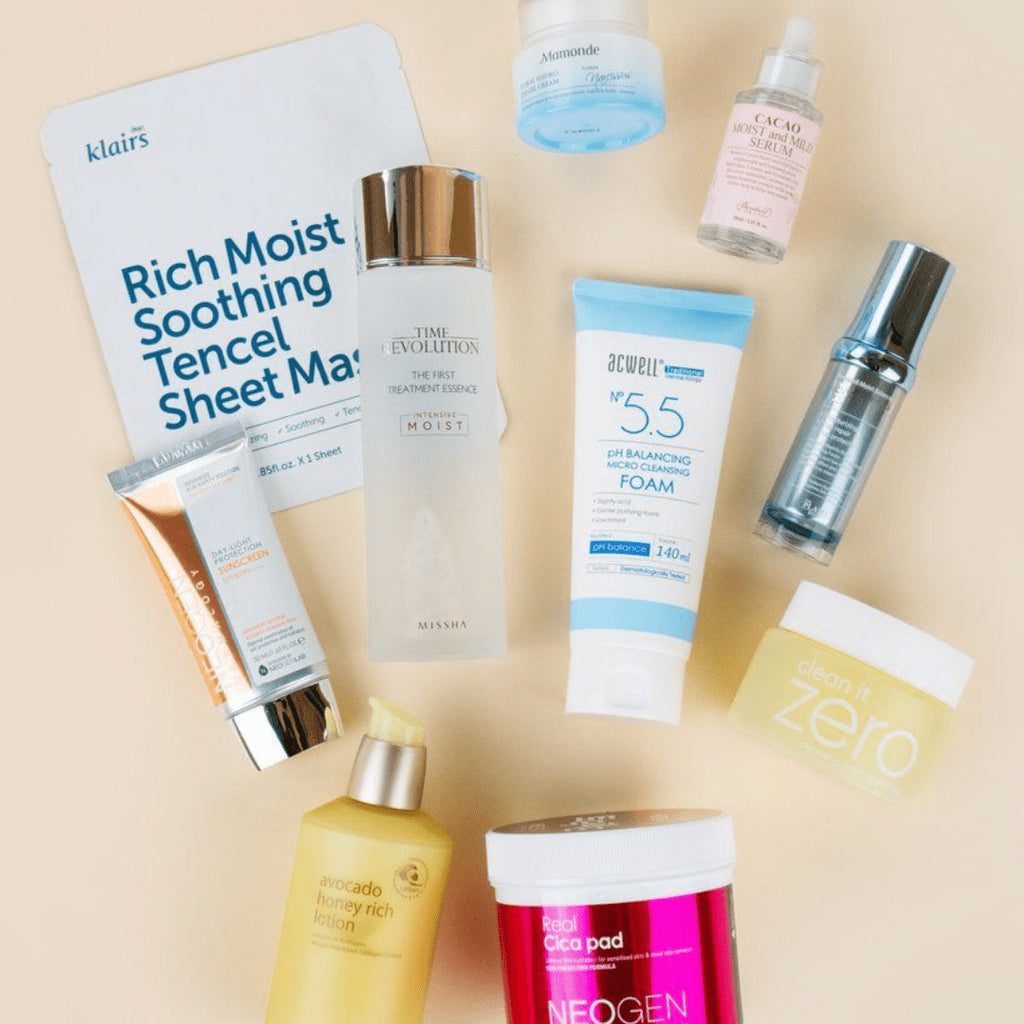About the 7 steps of care - Stages
Posted by ANDREI FIERARU

Proper skin care is essential to maintaining healthy and glowing skin, and to achieve this goal, experts recommend 7 skin care steps.
Step 1: Cleaning
Gentle cleansing of the face to remove impurities and excess sebum, make-up and other particles accumulated throughout the day on the skin. As this is a cleaning process, here are some things to consider at this step:
- Make-up removal: The important part of the skin cleansing process, before applying the cleansing product, it is recommended to remove the make-up with a suitable make-up remover, being the step that ensures the effective removal of all make-up residues

- Types of cleaning products: There are different products that can help you remove makeup, such asgels , foams , lotions , cleansing oils , choose the right product for your skin type and personal preferences.
- Duration and frequency: The duration being about 1-2 minutes, it is important not to rush, to allow the product to act and remove impurities effectively and if we talk about the frequency, it is good as usual to clean your face twice a day ( in the morning and in the evening). If you have dry or sensitive skin, it may be better to only cleanse your face once a day to avoid over-drying or irritation
Step 2: Toning the skin
Applying a gentle toner that balances the pH and prepares the skin for the next steps, it is important to choose a toner suitable for your skin type. If you have dry or sensitive skin, opt for a delicate and moisturizing toner , for oily or acne-prone skin, a toner with astringent and anti-inflammatory properties may be more suitable, so what should you consider
- The role of the tonic: Its role is to balance the pH of the skin and prepare it for the next stages, it can contain moisturizing, soothing, antioxidant ingredients that can provide additional benefits to the skin.
- Moisturizing and nourishing the skin: Many toners contain moisturizing ingredients such as hyaluronic acid, glycerin, botanical extracts that help maintain the optimal level of hydration of the skin, and some toners may contain vitamin C or green tea extract that can provide additional benefits to the skin.
Step 3: Exfoliate the skin
By removing dead cells and promoting skin regeneration, exfoliation can contribute significantly to the health and appearance of the skin, but it is important to do it carefully and according to the needs of your skin
- When to exfoliate: The frequency of exfoliation may vary as a function of skin type. People with sensitive or dry skin should exfoliate less often, once a week or every two weeks, and for those with oily or acne-prone skin, exfoliation can be done twice a week to prevent pore blockage
- Application and precautions: During exfoliation, apply the product to wet skin and gently massage in circular movements. Avoid the delicate area around the eyes. Make sure you follow the instructions for use on the product packaging and do not exfoliate the skin excessively
Step 4: Using the mask
It involves the use of a mask, which can hydrate, detoxify or provide additional nutrients to the skin, so it is important to use a hydrating mask because:
- The importance of hydration is crucial for maintaining its health and appearance, therefore proper hydration helps maintain the optimal level of moisture in the skin, contributing to its elasticity, firmness and suppleness.

- Key ingredients in moisturizing products are surrounded and formed by hyaluronic acid, glycerin, ceramide, niacinamide, natural oils and antioxidants (such as vitamin C and vitamin E)
Step 5: Moisturize the skin
Applying a moisturizing cream suitable for your skin type will help your skin to maintain hydration, moisturizing creams provide moisture to the skin and help maintain the optimal level of hydration, the skin looks smoother and more elastic, hydration prevents excessive drying of the skin and protects the natural barrier of it, and especially supports the function of skin regeneration
Step 6: Using a facial serum or oil
It is used to provide extra nutrients and antioxidants but also to treat specific skin problems, can be quickly absorbed into the skin and provides antioxidant protection.
Step 7: Apply a cream with sun protection factor
Applying an SPF product to protect the skin from harmful UV rays, this step is a measure of protection from a product that has UVB capabilities, the general recommendation is to use a product with an SPF of at least 30 or higher.

Therefore, using these 7 skin care steps, you will be able to maintain a healthy and glowing skin in the long term.
If you experience skin problems in one of the steps, stop that step and consult a dermatologist to help you in this direction.

